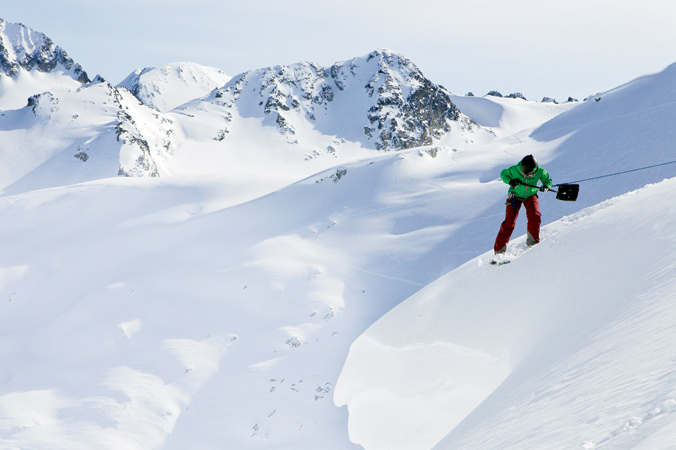Knowledge is power and, in the mountains, it leads to powder. But getting there and doing it safely takes time, practice and lessons both formal and not. And this year’s Skills Guide is a platform from which to dip a toe into the off piste, the impetus to dive headlong into a backcountry education or an opportunity to refresh and rethink personal processes. Because no matter your background, there’s always more to learn. And, just like traveling through the mountains, there’s pleasure in the pursuit.
—
Low, moderate, considerable, high, extreme—the avalanche hazard can be broken into fairly certain terms. But that simplicity belies a much bigger and more nuanced beast, ever changing and deeply complex, especially when paired with personal perspectives on risk and consequence. For safer travels, pair the day’s rating with a deeper understanding of what makes up that hazard and how it’s changing.
Here’s how to plan for and execute a safer trip.

Canadian guide Holly Walker stomps out a problem. | Decker Glacier Area, Spearhead Range, B.C. | Photo: Abby Cooper
Know The Problem
Checking up on the day’s hazard rating should be just the first step when reading the avalanche forecast. Dig further to learn about the day’s avalanche problem or problems—i.e., wind slab, loose wet snow, cornice fall, etc.—and determine on what aspects and at what elevations such problems exist. Understand the likelihood that these problems can result in avalanches and then develop an understanding of what terrain should be avoided, as well as what signs to look for in the field. If you have the memory of a goldfish, write the basics—problem, elevation, aspect, no-go zones—in a notebook or in your smartphone.
Snow Senses
Snow science might sound molecular, but it really starts with observations. Based on the forecast’s stated avalanche problems, gather information about what the snow is doing around and beneath your skis by looking for signs and using field tests appropriate to the given problem. Consider how what you’re seeing either supports or rebukes your hypothesis about what terrain is safe and what is not. Are there shooting cracks or signs of recent avalanches on unexpected aspects? Is there less deposition on leeward slopes than forecasted? Share what you’re seeing at each break and ask what your partners are seeing, too.
Get Trendy
If there’s one constant when it comes to weather, it’s its consistent changeability. Know and understand how weather trends and patterns affect the avalanche problem, considering past, present and future weather. Weigh the factors of precipitation, wind, temperature and sun—how much and for how long—and determine how such changes will either improve or degrade snow stability. Understand how and when the weather will change before heading into the mountains and, once out there, determine how that forecast is playing out. Adjust and refine your picture of the avalanche problems as necessary.
Safe Travels
Forecasts often include commentary about travel advice based on hazards and avalanche problems; incorporate these words of wisdom into your gathered observations. Adapt your understanding of what terrain to avoid and apply appropriate travel techniques to the likelihood and severity of avalanche problems and the potential for remote triggering. If a forecast doesn’t offer travel advice, dig up Drew Hardesty and Wendy Wagner’s 2014 article and International Snow Science Workshop presentation entitled “Travel Advice for the Avalanche Problems: A Public Forecasting Tool,” in which they dive deep into the travel measures and field tests that are best applicable to each avalanche problem.










Related posts:
Checklists, Beacon Checks and Route Planning: Building Systems as a Backcountry Traveler
The Art of the Sufferfest: How to make the worst ski days into the best memories
Mountain Skills: Cutting a Cornice
The Snow Pro: Sarah Carpenter is cool with being a snow-science geek